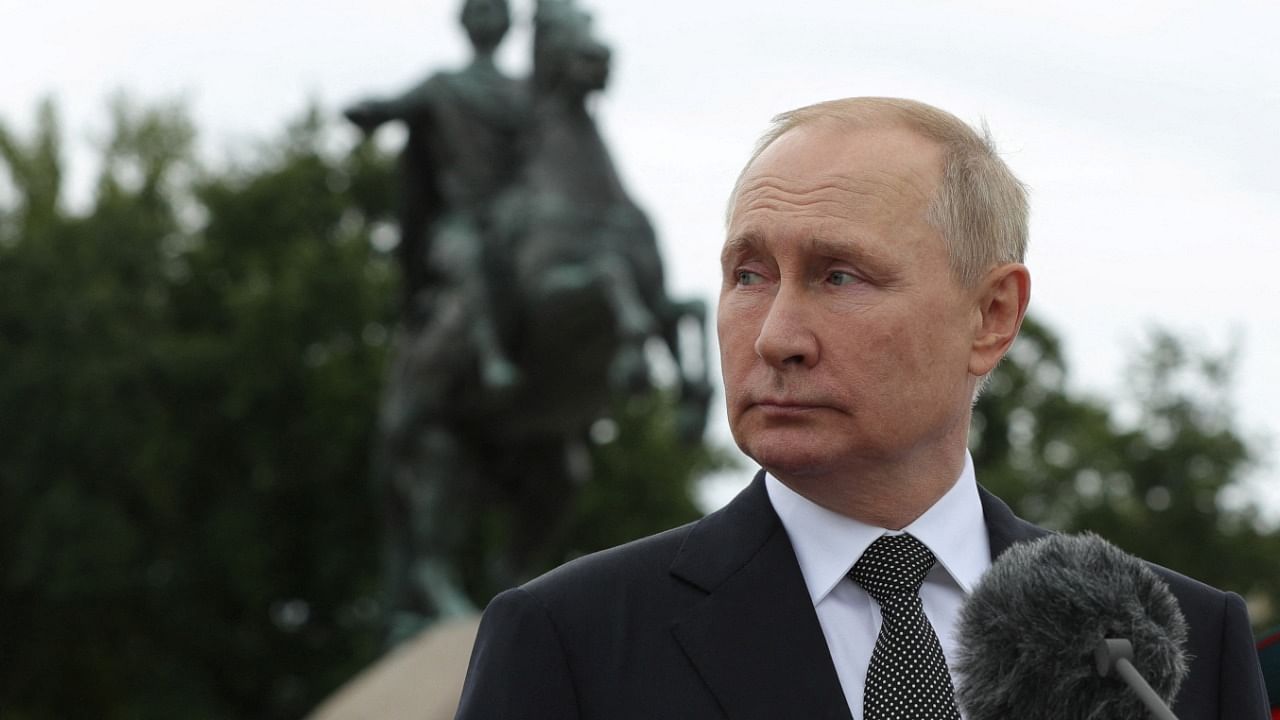
By Julian Lee
Oil producers from the OPEC+ group meet on Wednesday to agree to the next step in their market management. For the first time in a year, there is no clear policy for them to rubber stamp. That could make for an interesting (virtual) gathering.
The producer group has now added back all the production it agreed to cut in April 2020 — well, in theory at least — with the target for August back at the original baseline level.
In practice, the group’s production is lagging far behind, with the members pumping about 2.7 million barrels a day less than planned in May, the most recent month for which full production figures are available.
Nearly half of the shortfall is attributable to Russia, whose crude and refined products have been shunned by some European buyers after its troops invaded Ukraine in February. Diverting exports to India has helped Russia to avoid the full impact of buying bans, but it has not been able to completely offset the loss of much of its European market.
OPEC+ is facing calls to raise production. During his visit to Saudi Arabia earlier this month, President Joe Biden asked the group to pump more to help bring down soaring inflation. This week’s meeting will be the first opportunity for all the members to discuss that request.
If it seriously considers raising output again — and there’s no guarantee that it will — the group could increase everybody’s targets. But that would simply widen the gap between planned and actual production, given that few countries will be able to pump more than they already are. In practice, it is only Saudi Arabia and the United Arab Emirates that have significant spare production capacity, and even then there are still questions about how much they can do.
The other alternative would be to make up for the shortfalls of some OPEC+ members by allowing those with spare capacity to pump more, redistributing the unused portions of existing targets. That may be a logical approach, but so far the group has shown no appetite to go down this road. There is likely to be resistance to any plan for redistributing unused allowances.
But the widening gap between target and actual output undermines OPEC+ credibility. It is becoming untenable for the group to claim to be stabilizing the oil market when prices are soaring and their production plans bear little resemblance to reality.
I don’t think Russia will give up any of its target to other members, even on a temporary basis, unless it gets something in return. The OPEC countries expended a lot of political capital to bring Moscow into their wider group and will do almost anything necessary to keep it there. They aren’t likely to end Russia’s output target parity with Saudi Arabia, and that would make redistributing the unused portions of other countries’ targets problematic.
And don’t count on Russia supporting anything that would substantially reduce oil prices. In order to persuade refiners in India to process their crude, Russian sellers have been forced to offer big discounts. The country’s flagship Urals export grade traded at a discount of nearly $35 a barrel to benchmark Brent crude in April-May. Although that’s narrowed more recently, Urals was still trading at $25 a barrel below Brent in the month to mid-July.
That probably rules out a big increase in output targets, as Russia doesn’t want even lower oil prices. The Kremlin needs to keep filling its coffers to pay for its war in Ukraine, and it’s surely relishing the pain that high energy prices are causing those that oppose it.
Yet OPEC’s own analysts show a growing need for its crude. The world will need almost 30.5 million barrels a day from this smaller group during the current quarter to balance supply and demand. That’s 1.74 million barrels a day more than the 13 OPEC countries pumped in June.
Consumers are drawing more than 1 million barrels a day of crude and refined products out of emergency stockpiles, but most of that’s due to end in October. If OPEC doesn’t fill the gap, either prices will rise or demand will have to come down. Most likely, one will follow the other.
This will be the first OPEC+ meeting in more than a year without a pre-agreed output plan. That ought to allow the group to make a proper assessment of what the world really needs from it, but I fear the heavy hand of the Kremlin will forestall any meaningful attempt to bring down oil prices.